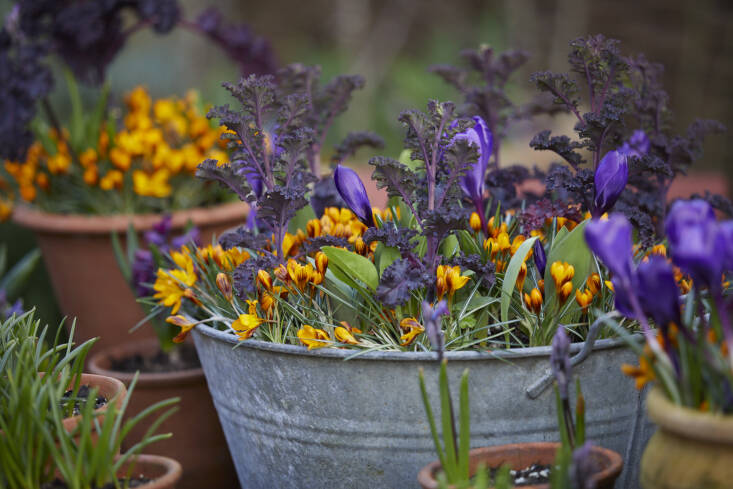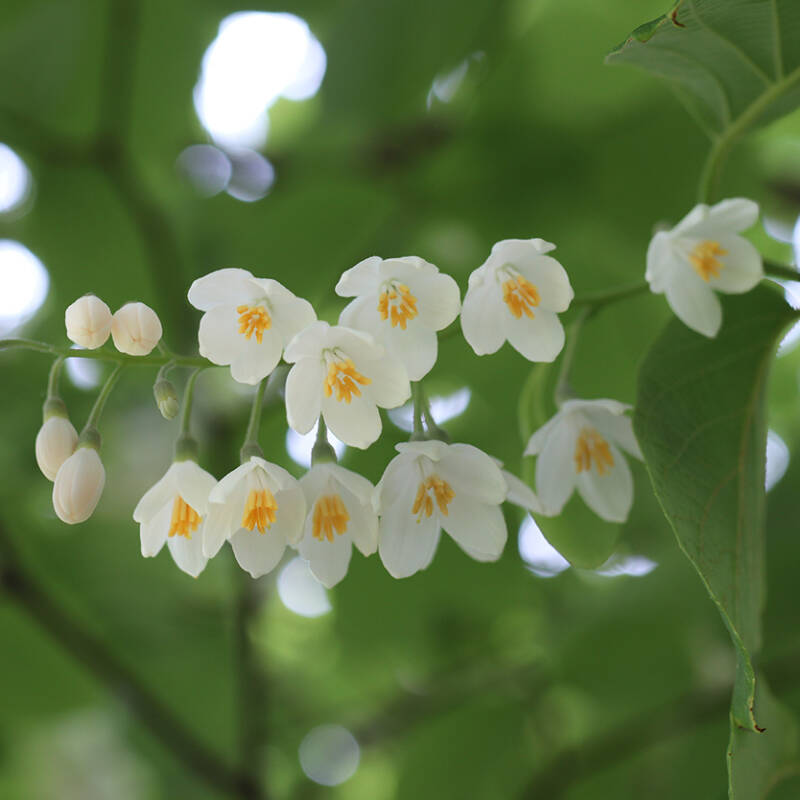Anyone who has followed the progress of Arthur Parkinson will know that he is brilliant with flowers (and with birds, particularly hens, and bees and other insects). He is also a great communicator. Long before the days of Instagram (where @arthurparkinson_ is more edifying than most), young Arthur was reaching out to those he admired, such as the late, lamented Debo, Duchess of Devonshire with whom he became friends when he was seven, and later, as a horticultural student, the doyenne of intelligent gardening, Sarah Raven, his co-host on the podcast Grow, Cook, Eat, Arrange.
Arthur’s most recent book, The Flower Yard, was based on the tiny, tiny space around the front door of his family house in Nottingham, where he spent the first lockdown. Except for one narrow border, he had no soil to work with—which was all the more reason to fill the front path with large tubs, planted with a successional display of flowers in the richest colors. Now he is living further south in the Cotswolds and tending another miniature garden (albeit not quite as small as before), but the flower yard ethos has stayed with him. Over the weekend, we paid him a visit:
Photography by Britt Willoughby Dyer for Gardenista.

People with bigger gardens than Arthur complain that their crocus blossoms are eaten, their bulbs stolen away. Plus, hundreds of bulbs are required to make any impact. In a pot, or an “archipelago of pots,” as Arthur describes his islands of color, a smaller quantity is crammed together, and planted in layers, with tulips lowest. The result is an undiluted version of the season’s potential.

Color is worked out with the help of mood boards, using scissors, paper, and glue (rather than color wheels and graphs). Arthur plants bulbs in the lasagna-layering idea that Sarah Raven made famous. They work closely together, on Sarah Raven’s courses and catalogs. “We both do the lasagna,” explains Arthur, “but I do my own recipes.”

All of the pots—whether galvanized metal or terracotta—have several drainage holes, which are covered in “clink” (e.g., gravel, slate, or polystyrene) to prevent blockages. The soil has to be really good for plants to do well in these island conditions: “I go and get buckets of mole hill soil from the church yard and mix it into peat-free composts,” explains Arthur. “I also mix in well rotted manure; it’s the sort of soil that you’d use for vegetables. I always add organic chicken manure pellets too.” (Learn why choosing peat-free is important these days.)

“The planters [at the bottom] are full of pheasants eye narcissus that go into the house for living perfume pots,” says Arthur. Hanging up in the background: a fat ball feeder for birds, with a candle holder that is used for fat balls, beneath it. To deter squirrels, pigeons and crows, Arthur only uses fat balls, and apples on a bench for blackbirds. Shallow bowls are scattered around for bird drinking or bathing. “When you look out, it’s like an aviary with them all, bathing and feeding.”

Arthur leans more towards the saturated colors of exotic birds when it comes to flower colors, but he occasionally makes allowances for pastels. In spring, some of us really yearn for yellow-cream, mixed with deeper yellow, lilac, and pale blue (plus fresh green) which is what we have here in Crocus chrysanthus ‘Cream Beauty’, C. chrysanthus var. fuscotinctus, C. vernus and C. biflorus ‘Blue Pearl’.

“I love my pot toppers—the kale and cardoon,” says Arthur. “I’ll be looking at them all through the winter and then it all comes up with color.” Cardoon is more hardy than artichoke and has good silvery structure early in the year.

Cardoons are programmed to become quite enormous, at which point they will “probably” go into the not-very-large borders. “But I love them with dahlias, so this one will stay in there,” says Arthur. He cuts back leaves that become outsized. “The leaves do get big, but you just cut them off.”

For more on container gardening, see:
- Container Gardening: Sarah Raven’s 7 Tips for Perfect Flower Pots
- Container Gardening at the Chelsea Flower Show: A Tiny Garden with a Big Message
- Container Gardening: 12 Shade-Loving Plants in My Backyard









Have a Question or Comment About This Post?
Join the conversation